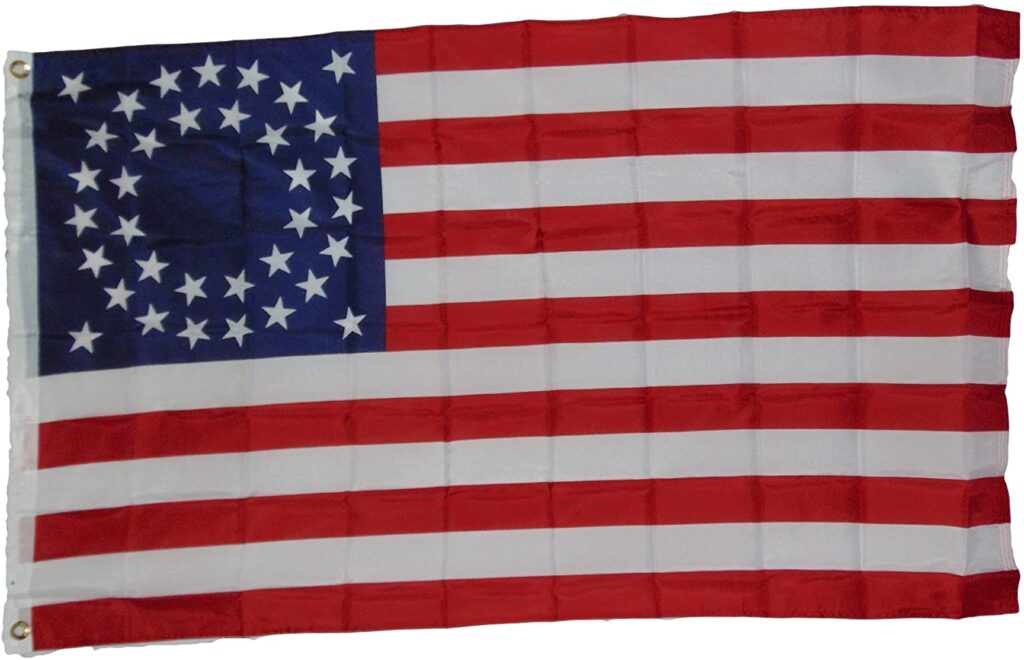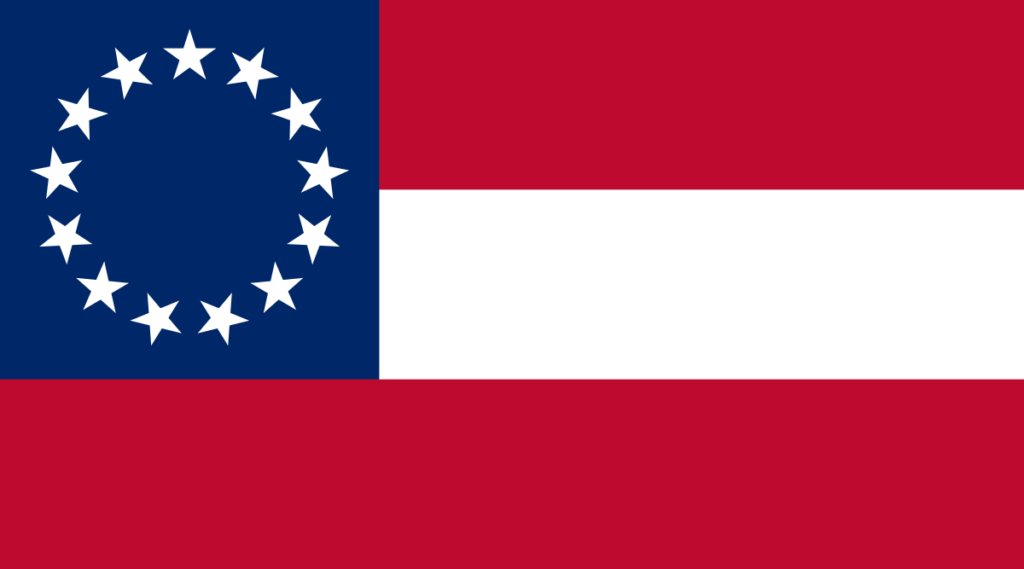Flags are fabrics with unique colors, shapes, and patterns to represent a nation or a group. Flags were very significant during wars as they were an indication of the supporting army. The Civil War flags were the flags that were used by the Federal Union army and the Confederate army during the American Civil War, which started in 1861 and lasted till 1865. The following are the American Civil War flags and the Civil War battle flags.
The Union Flags:

The Union flag was similar to the flag of the United States of America civil war flags , with thirteen stripes representing the thirteen colonies that fought against the British colonizers. The Union flag didn’t have many differences except for one significant change. The number of stars was reduced from fifty to thirty-four to indicate the states that were supporting the Federal Union government.
Initially, from 1861 to 1863, the flag of the Federal army had 34 stars arranged in a linear manner in five rows, with the top two rows and the bottom two rows having seven stars each and the middle row having six stars. The flag was changed a little bit by 1863 due to the inclusion of West Virginia, which became an avid supporter of the Federal army by 1863.
The thirty-five stars were arranged in a different manner this time. Four stars were present in the corner of each inner square. The remaining thirty-one stars were placed in a band of two circles, with the inner smaller ring having twelve stars and the larger outer ring having nineteen stars. The thirty-six-star version had an additional star to represent the state of Nevada.
The Confederate flags:

The Confederate flags had seven stars and three bars which was very different from the civil war flags . The stars were white in a blue background and represented the seven states, namely Louisiana, Florida, Texas, Alabama, Georgiana, South Carolina, and Mississippi. These seven states were the first few states in the South that seceded the government. The stars were arranged in a circular fashion.
The three bars were red and white, with one white bar in the center and two red bars in the bottom and the top. As the war proceeded, two extra additional stars were added to represent the states of Virginia and Arkansas. The Confederate flag had nine stars in total. This was not the final flag of the confederates.
Many other states started to join hands with the Confederate army, leading to the addition of another two stars to represent Tennessee and North Carolina. The final flag had 13 stars which represented 11 states of the confederacy and two states with strong confederate support. The two states were Kentucky and Missouri. The position of the Confederate was not particularly strong in the states of Kentucky and Missouri. The name provided to the Confederate flag was “Stars and Bars.”
The Confederate flags were similar to the United State’s Stars and Stripes flag, which was used by the Union Army. Both the flags were of the same color codes, same shapes, and also same outlook. This often led to confusion between the differentiation and distinction of both parties.
In 1863. The Confederates altered their flag to avoid such perplexions. They created the Stainless banner with a white background and a red, blue, white contained shape in the top left corner of the flag. The top left sign represents the Civil War flags. The Civil War flags are the official insignia of the fighting army to express their support. The whole total ratio flag was called the Battle flag which as similar to the civil war flags. The aspect of the flags was generally a 2:3 ratio, but other variants also had a 1:2 ratio.
Battle flag:
The Battle flag had a red background with two intercrossing dark blue cross lines with a white border around them. The thirteen stars were placed along the cross lines. The Battle flag was inspired by the United States flag and the Scottish flag and the civil war flags. The inclusion of the saltire in the Battle flag was to honor the Scottish ancestry of the Confederates.
This civil war flags and Battle flag variant was more popular than the Stainless banner as the white background of the latter symbolizes submissiveness and peace. In contrast, the red background symbolizes the courage and bravery of the soldiers. Variants of these flags with a navy blue background instead of a red background were also prevalent. The blue background flags had red crosslines instead of the blue crosslines.
Bloodstained Banner:

Later a new variant of the Stainless banner was created and was called the Bloodstained Banner a few months before the war’s end. A distinct vertical red stripe was added to the right corner of the flag. The Red stripe indicated the French involvement in the state’s history. Louisiana was a French colony, and the French flag’s “Rouge” was included as a homage. The red stain was symbolically called the bloodstain. Apart from these, each state had its own state flags with a state emblem.
Navy Jack:

The Navy Jack was the official Navy flag of the Confederates. The first version of the Navy Jack had a plain navy blue background with seven stars. The other Navy Jack flags were very similar to the other battle flags. The first Navy Confederate flag was identical to that of the first Confederate flag. The second Confederate Navy flag had a slight variation in the blue shade. All the other flags had navy blue color in their flags. But this flag had a lighter blue undertone.
The different variants of the Navy flag ensign had a square-like arrangement of stars in a three-cross-three manner and four-cross-three manner. Another variant of the first Confederate flag had eleven stars with four on each corner and seven stars in the middle arranged in a circular fashion. The CSS Seabird flag was similar to the French flag, with eleven stars on the right blue portion arranged in a plus-like manner.
Other variant flags:

The other variants of the Confederate’s Civil War flags and Civil War battle flags include the Bonnie Blue flag, Cherokee Braves flag, the Varn Dorn battle flag, Northern Virginia state flag, First corp, Choctaw war regiment, Perote guard flag, Biderman flag, Sibley flag, Confederate state revenue service flag, Vicksburg campaign flag.
Though several other flag proposals for the Confederacy came up, they limited the designs to avoid confusion. The main aim of the Confederacy was to create and utilize a unique flag without being confused as the Union flag. Even after the end of the American Civil War flags , the usage and utilization of the American Civil War flags and Civil War battle flags were very much prevalent.

